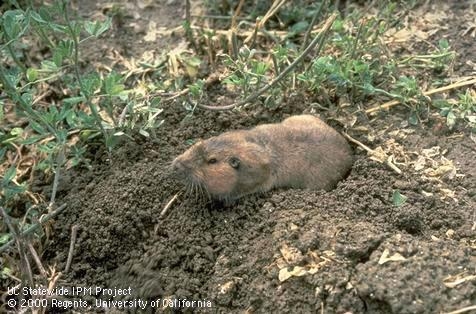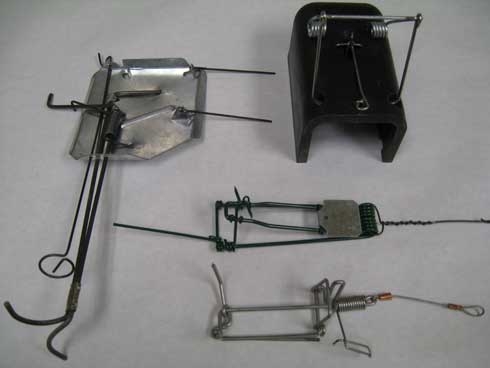Advice for the Home Gardener from the Contra Costa Master Gardeners Help Desk
Client's Problem & Questions:
(Thomomys sp.)
CCMG Help Desk Response
Following up on our phone conversation earlier today, you will find below the information we discussed and/or promised on the phone. I did some additional research and have included wht I found as well below. In one instance, I came across a research paper regarding gopher management in California almond orchards. The almond orchard research showed that trapping plus additional fumigation had the highest efficacy. The reason that these two methods were combined was because the research showed that as the gophers become trap shy, the additional fumigation targeted the gophers that the traps missed. I believe the lesson learned from that research it that it will probably take more than one “solution” to get effective control of your gopher population.
In your case, because you are trying to protect your vegetable patch, and your hesitation to “trap and kill” the gophers, exclusion is most likely going to be the best, most effective method. You mentioned that this was a project you might take on next spring. Here is some information on gopher wire to line your raised beds or bury around your in-ground vegetable beds. Gopher wire is specifically designed for gopher exclusion. Look for a wire mesh measuring no more than 3/4” square or diagonally. The reason for the 3/4" spacing is the holes must be small enough to keep young gophers out. This size is determined by a young gopher's shoulder girth at the weaned age of about 8 weeks. The mesh should be 20 gauge wire (thick enough to resist the chewing of gophers). Really high quality mesh will be “double galvanized” which gives it a much longer life when buried in the ground. You must either bury the wire mesh at least 2 feet deep with some surface wire barrier showing as well when encirciling in-ground plantings. For raised beds you would line the bottom and some of the side walls (see Pest Note below).
You also mentioned that you were putting in a cover crop of clover. In my research I found information about clovers and gophers that would be helpful to you. Gophers are attracted to most clovers, especially crimson clover, which is a popular cover crop. Try substituting sour clover from the family Melilotus indica. Sour clover is high in coumarin, the original source of the blood thinner Coumadin. Gophers avoid ingesting sour clover, possibly because the coumarin adversely affects their blood chemistry. Sour clover also fixes nitrogen, reseeds easily, and has flowers that attract bees. Several plants are often called sour clover, including oxalis (gophers love oxalis), so be sure to get Melilotus indica.
Types and brands of gopher traps
include (clockwise from upper right)
Victor Black Box, Macabee,
Gophinator, and Cinch
(e.g., https://www.youtube.com/watch?v=Xz2GplXB-9s).
The link below is the UC Davis IPM link to information on gopher management. It is comprehensive and will help you understand all the pros and cons of the various management options.
http://www.ipm.ucdavis.edu/PMG/PESTNOTES/pn7433.html#MANAGEMENT
Thanks for contacting us with your garden question, if we can be of further assistance please call us again.
Contra Costa Master Gardeners Help Desk
Note: The Contra Costa Master Gardener Help Desk is available year-round to answer your gardening questions. Except for a few holidays, we're open every week, Monday through Thursday for walk-ins from 9:00 am to Noon at 75 Santa Barbara Road, 2d Floor, Pleasant Hill, CA 94523. We can also be reached via telephone: (925) 646-6586, email: ccmg@ucanr.edu, or on the web at http://ccmg.ucanr.edu/Ask_Us/